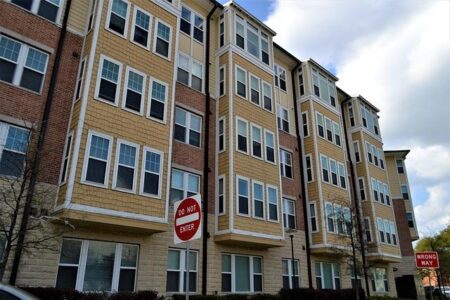Houston School Districts Witness Significant Drop in Bilingual Student Enrollment
Recent statistics from the Texas Education Agency (TEA) reveal a marked reduction in the number of bilingual students enrolled in Houston-area schools. This demographic shift signals important changes in the makeup of the student body and prompts critical discussions about the future of bilingual education programs and community support services. Given Houston’s rich cultural diversity, bilingual education has been a cornerstone in meeting the academic and linguistic needs of many students. Educators and policymakers are now analyzing these enrollment trends to assess their implications for language assistance initiatives and student success.
Concerns Arise Over Declining Bilingual Enrollment in Houston Schools
Data from the TEA indicates a clear downward trend in bilingual student numbers across Houston’s major school districts. This decline has raised alarms among educators who worry about the sustainability of bilingual education programs, which are essential for supporting English Language Learners (ELLs) and promoting equitable academic opportunities. Several factors appear to be influencing this shift, including demographic changes, modifications in district policies, and possible inaccuracies in language data reporting.
School administrators and community leaders emphasize the need for a thorough investigation into these causes to safeguard the future of bilingual education. Key challenges identified include:
- Decreased financial support for bilingual initiatives.
- Increased emphasis on English-only instructional approaches.
- Insufficient outreach to immigrant and newly arrived families.
Robust bilingual programs not only improve academic outcomes but also nurture cultural understanding—an essential element in Houston’s multicultural environment.
How Reduced Bilingual Enrollment Affects Language Programs and Student Achievement
The shrinking bilingual student population in Houston schools has sparked concerns about the viability of language programs and their impact on overall academic performance. Educators fear that declining enrollment may lead to cuts in dual-language programs, which have historically enhanced bilingual proficiency, cultural awareness, and cognitive skills. In response, district leaders are exploring innovative strategies to maintain these programs despite demographic shifts and budget constraints.
Research consistently shows that students engaged in bilingual education often outperform their monolingual peers in areas such as literacy and critical thinking. The table below compares recent academic performance indicators between bilingual and monolingual students in select Houston districts:
| School District | Graduation Rate (%) | Reading Proficiency (%) | Math Proficiency (%) |
|---|---|---|---|
| Houston ISD (Bilingual) | 89 | 76 | 72 |
| Houston ISD (Monolingual) | 81 | 68 | 65 |
| Alief ISD (Bilingual) | 92 | 79 | 75 |
| Alief ISD (Monolingual) | 84 | 70 | 67 |
- Eliminating bilingual programs could disproportionately hinder English Language Learners who depend on language support.
- Community-driven advocacy is increasingly vital to encourage school boards to preserve dual-language education.
- Alternative enrichment options, such as after-school language tutoring and multicultural clubs, are being explored to supplement formal programs.
Key Drivers Behind the Decline in Bilingual Student Enrollment
Multiple factors contribute to the decreasing number of bilingual students in Houston’s public schools. Notably, recent state policy revisions have narrowed eligibility for bilingual education, restricting access primarily to students officially designated as English learners. This change excludes many heritage language speakers who could benefit from bilingual instruction but no longer meet the updated criteria.
The COVID-19 pandemic has also played a significant role, disrupting traditional learning environments and disproportionately affecting students who rely on language support services. Concerns about inconsistent remote instruction have led some families to withdraw from bilingual programs.
Socioeconomic pressures and demographic shifts further complicate the picture. Economic instability among immigrant families often results in higher student mobility, making continuous enrollment challenging. Additionally, recent census data indicates a slight decline in the number of school-age children living in households where a language other than English is spoken, naturally reducing bilingual enrollment.
| Contributing Factor | Effect on Enrollment |
|---|---|
| State Policy Adjustments | Stricter eligibility criteria for bilingual programs |
| Pandemic Disruptions | Lower participation due to remote learning challenges |
| Economic Hardship | Increased student turnover and withdrawals |
| Demographic Changes | Reduction in non-English-speaking households |
Effective Approaches to Bolster Bilingual Education and Boost Enrollment
To reverse the downward trend in bilingual enrollment, school districts must implement comprehensive strategies that celebrate cultural diversity and strengthen academic support. Initiatives that engage families—such as bilingual workshops and culturally relevant extracurricular activities—can foster welcoming environments that motivate enrollment and active participation.
Highlighting the cognitive, social, and economic advantages of bilingualism through targeted outreach can also increase parental support and advocacy for dual-language programs. Furthermore, investing in ongoing professional development for educators is essential to enhance instructional quality and ensure program sustainability.
Collaboration with community organizations and data-informed resource allocation will enable districts to address specific needs effectively. The following table outlines key strategies and their projected benefits for bilingual education enrollment:
| Strategy | Focus Area | Anticipated Result |
|---|---|---|
| Family Engagement Initiatives | Community Participation | Increased Enrollment and Retention |
| Teacher Professional Development | Instructional Excellence | Enhanced Teaching Quality |
| Data-Driven Resource Management | Program Efficiency | Improved Student Outcomes |
| Awareness and Advocacy Campaigns | Parental Support | Greater Demand for Bilingual Programs |
Conclusion: Addressing the Future of Bilingual Education in Houston
The ongoing reduction in bilingual student enrollment within Houston-area school districts presents complex challenges for educators and policymakers striving to meet the needs of a linguistically diverse student body. The latest TEA data underscores a pivotal shift that demands renewed commitment to language access, equitable resource distribution, and meaningful community involvement. Moving forward, collaborative efforts among stakeholders will be essential to ensure that all students receive the comprehensive support necessary to excel academically and thrive in Houston’s multilingual landscape.




